Pay A Visit to Chongqing
2018-01-25
Chongqing is the larg- est municipality in southwest China. It is a modern port city on the upper reaches of the Yangtze River at the confluence of the Yangtze and Jialing Rivers. With an area of 31 800 square miles (82,400 square kilometers), it shares borders with provinces of Hubei, Hunan, Guizhou, Sichuan, and Shanxi.
As Chinas fourth municipality after Beijing, Shanghai, and Tianjin, Chongqing has maintained rapid economic development while preserving a wonderful natural environment. Known as the ‘Mountain City, it has a wavy terrain and encompasses a wealth of water reserves, mineral resources, dense forests, and abundant flora and fauna.
The city attracts visitors from home and abroad for its natural wonders and cultural heritage. As a common starting port for the Yangtze River cruise, tourists can go for a downstream tour to the magnificent Three Gorges.
Qutang Gorge of Yangtze River
Qutang Gorge, the shortest and most majestic of the Three Gorges, winds five miles from Baidi City in Fengjie County to Daxi Town in Wushan County. The two banks of the gorge contain numerous scenic spots. Southwest of the Qutang Gorge is the Kui Gate, also called the Qutang Pass. Two peaks, Mt. Baiyan (White Salt Mountain) in the north and Mt. Chijia soar above the horizon. The two mountains resemble a gate that might have been created by Heaven and placed here on earth.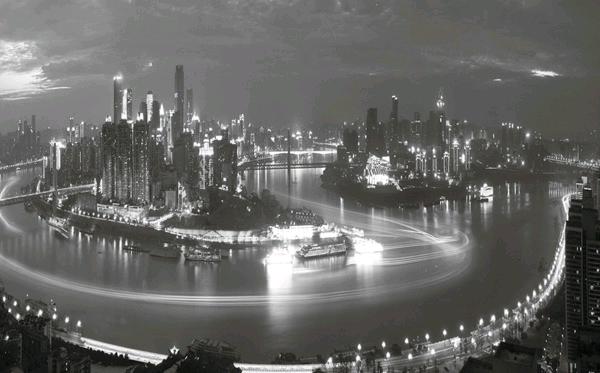
As the peaks along the two banks are 3,281 feet to 4,921 feet high and the Yangtze River is only 109 yards to 219 yards wide, the Yangtze River looks like a narrow belt winding its way through the deep canyons. The deep gorge, fast-moving water, and chains of mountains form an imposing picture. Because of the Kui Gate, it is also known as the Kui Gorge.
Upstream from the mouth of Qutang Gorge is the ancient county of Fengjie where one can admire the Ba Zhen Tu (Eight Element Battle Forma- tion). In the gorge, Baidi City (White Emperor City) lies at the top of the northern bank. On the southern bank one can find an unusual sight--the Chalk Wall--on which numerous inscriptions are carved. Also, Mengliang Stairway and Hanging Monk Rock, which have a legend associated with them, are located on the southern bank. The northern bank is also endowed with some interesting sights. Among them are Bellows Gorge (Fengxiang Xia) where the ancient hanging coffins are located and the remains of the ancient plank road. Holes for the roads supports were chiseled into the sheer face of the cliffs by the ancient people. The road was once the only means of transportation for people and goods while the river was in flood.endprint
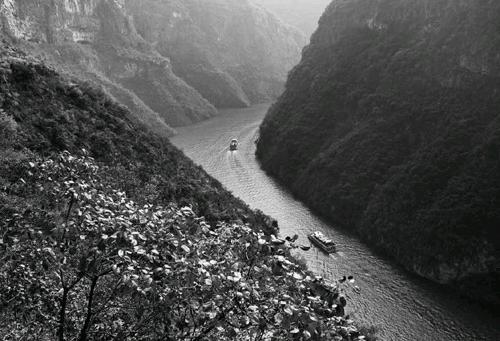
Hongya Cave
Hongya Cave has a history of over 2,300 years. It was a military fortress from the ancient Ba State (1046 B.C. -256 B.C) to the Ming and Qing Dynasties (1368 - 1911), and was also the site of the earliest and most developed pier of ancient China. The site now houses a large-scale stilt house complex built alongside a steep cliff on the bank of Jialing River. It has become a popular destination for visitors to experience Bayu culture - a Chinese ethnic culture, gaze over the river, and taste delicious food. The stunning night view is a highlight and should not be missed.
Hongyadong is an 11-storey, 75 meters (245 feet) stilt house abutting a steep cliff. It is popular with tourists because it has a similar appearance to a building in Spirited Away - a masterpiece of a famous Japanese cartoonist, Hayao Miyazaki. It is incredible that the 1st floor and the 11th floor are accessible by two different roads. Visitors can take an elevator to each level where various bars, café and restaurants are arranged. Visitors can also see the symbolic Hongya Dripping on the 2nd floor, which is a small waterfall cascading down the cliff-face. It is regarded as one of the 12 Bayu Sites.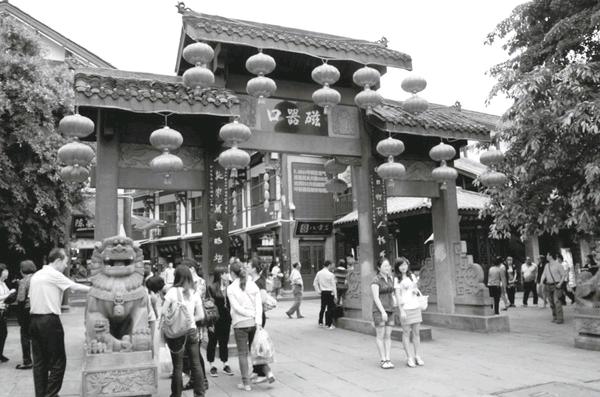
Porcelain Village
Situated on the bank of the Jia Ling River, not far from its confluence with the mighty Yangtze is the ancient village of Ci Qi Kou, formerly known as Long Yin. Covering an area of some 291.6 acres (1.2 square kilometres), it is 9 miles(14 kilometres) to the west of Chongqing Municipality.
Chongqing itself has undergone many changes over the centuries, changes that have not been reflected in Ci Qi Kou with the consequence that the village conveys an impression of what Chongqing would have been like in the distant past. This fact has been recognized by the State Council and in 1998 Ci Qi Kou became a protected cultural site.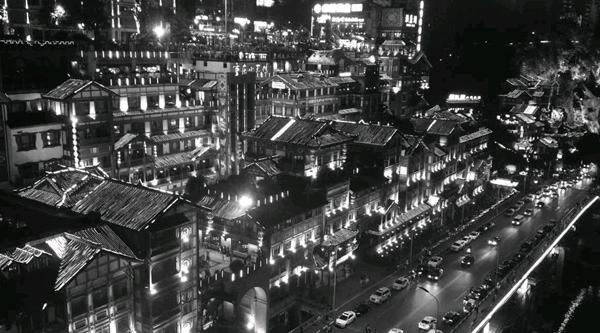
The history of Ci Qi Kou can be traced back for more than 1,700 years. During the Ming and Qing Dynas-ties (1368-1911), it was famous for its production of porcelain. To date, over twenty old kiln sites have been discovered there. It is because of the importance of the porcelain industry that the name has been changed from Long Yin to Ci Qi Kou which is translated as Porcelain Village. Moreover, the village was an important supply post for ship- ping on the river, a fact that explains why there are so many shops lining the twelve lanes paved with their large flag stones that form the main routes. Here you will find many outlets for craftwork, groceries and the like as well as a horologist, photography supplies, drugstore and a tempting supply of roasted nuts and seeds. As one would expect, there are also many teashops and restaurants to cater for the many visitors who come to see something of a way of life that has existed here for so many centuries.endprint

The three notable attractions of the village are the tea bars, the artistsstudios and the Shu Embroidery workshops. Surprisingly, there are more than a hundred tea bars each with their own particular characteristics. Here friends enjoy a chat or meet to discuss business. So the tea bars offer the opportunity for you to meet the locals and also become acquainted with the unique folk opera.
The ateliers, where you may see the work of the local artists will be of great interest. It has been said that the more beautiful a place is, the more artists it will attract. You are sure to be amazed by the quality of the works on show and in progress as the many artists record the local scenes with skill and dedication. With so many artists working in Ci Qi Kou, you will be spoiled for choice when seeking a souvenir of your visit.
Dazu Rock Carvings
Dazu Rock Carvings contains all the cliffside carvings in Dazu County. The collection is composed of the rock carvings in Beishan, Baodingshan, Nanshan, Shimenshan as well as Shizhuanshan, all of which are of the highest artistic attainment and demonstrate the most exquisite skills.
Dazu County, reputed as ‘the county of rock carving is located at the southeast of Sichuan province. It is 168 miles (about 271 kilometers) from Chengdu on its west and 104 miles(about 167 kilometers) from Chongqing on its east. The whole county has an area of 540 square miles (about 1,400 square kilometers), and it owns a history of more than 1,200 years since it came into existence in 758 during the Tang Dynasty (618-907).
Dazu Rock Carvings was built from 650 in the Tang Dynasty and continued to the Ming Dynasty (1368-1644) and the Qing Dynasty (1616-1911). It is as famous as the Mogao Caves in Dunhuang, Gansu Province. The rock carvings in these places are very distinguished both at home and abroad. Among the rock carvings, there are more than 50,000 statues and over 100,000 Chinese characters of inscriptions and epigraphs. The Buddhist statues dominate in this rock carving group, and the Taoist and the Confucian stone figures can also be seen.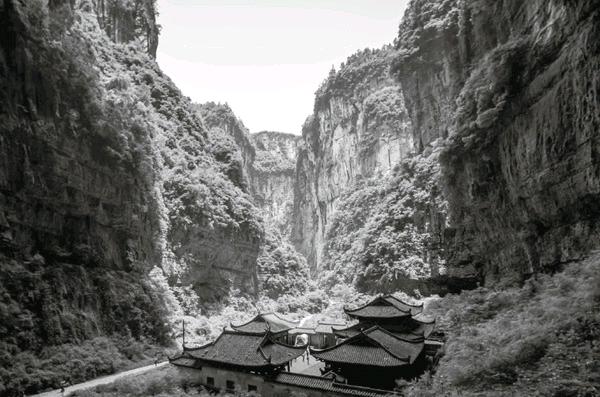
Wulong Karst National Geology Park
Wulong Karst National Geology Park, an important part of South China Karst, is situated at the lower reaches of the Wujiang River in southeast Chongqing. It was named as a world natural heritage by UNESCO in 2007. Wulong Karst features spectacular karst land-scapes, including the three main parts of Furong Cave, Three Natural Bridges and Houping Giant Doline (Houping Tiankeng).endprint
Wulong Karst is a valuable treasure that nature created. It is a cluster of several karst landscapes, consisting of gorges, natural bridges, caves, eroded dolines, shafts and underground streams. These karst landforms developed in the carbonate rocks, vividly recording the development and evolu- tion of karst terrain in the Three Gorges area since Pleistocene Era. Furong Cave, Three Natural Bridges and Houping Giant Doline are the three representative karst landforms, developing under the condition of intermittent uplifting movement of the earth.
Each of the three karst systems standing alone forms a spectacular landscape. Furong Cave, literally Lotus Cave, abounds with various karren sediments forming many splendid natural won- ders. The limestone sediments are also of great significance in scientific study. The three natural bridges constitute the largest natural bridge cluster in Asia, and the natural karst bridges are quite high and grand, a sight rarely seen anywhere in the world. Houping Giant Doline is the prime example and the largest tiankeng cluster formed by erosion in the world, and the longest underground cavern system in Asia.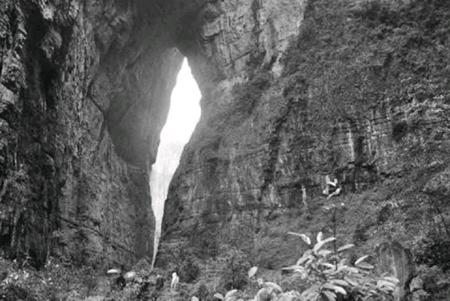 endprint
endprint
